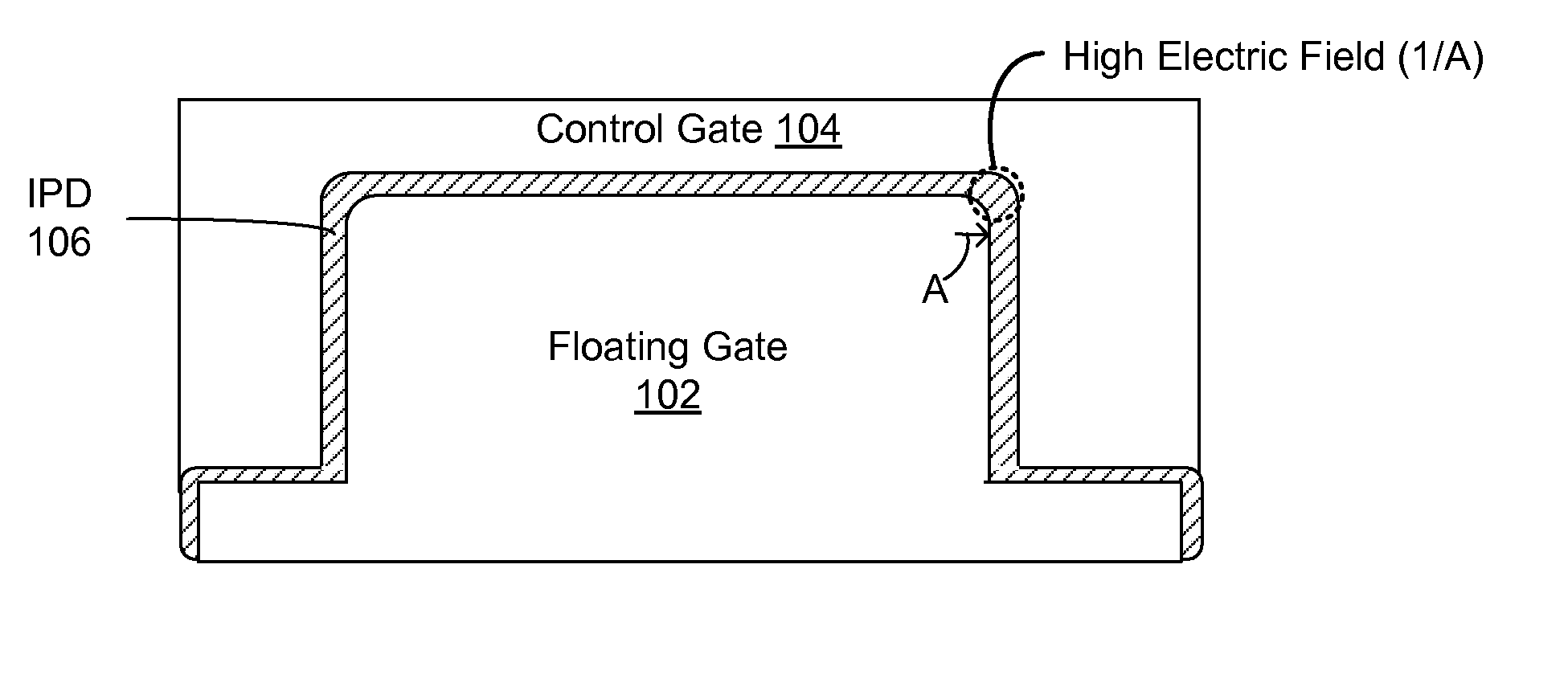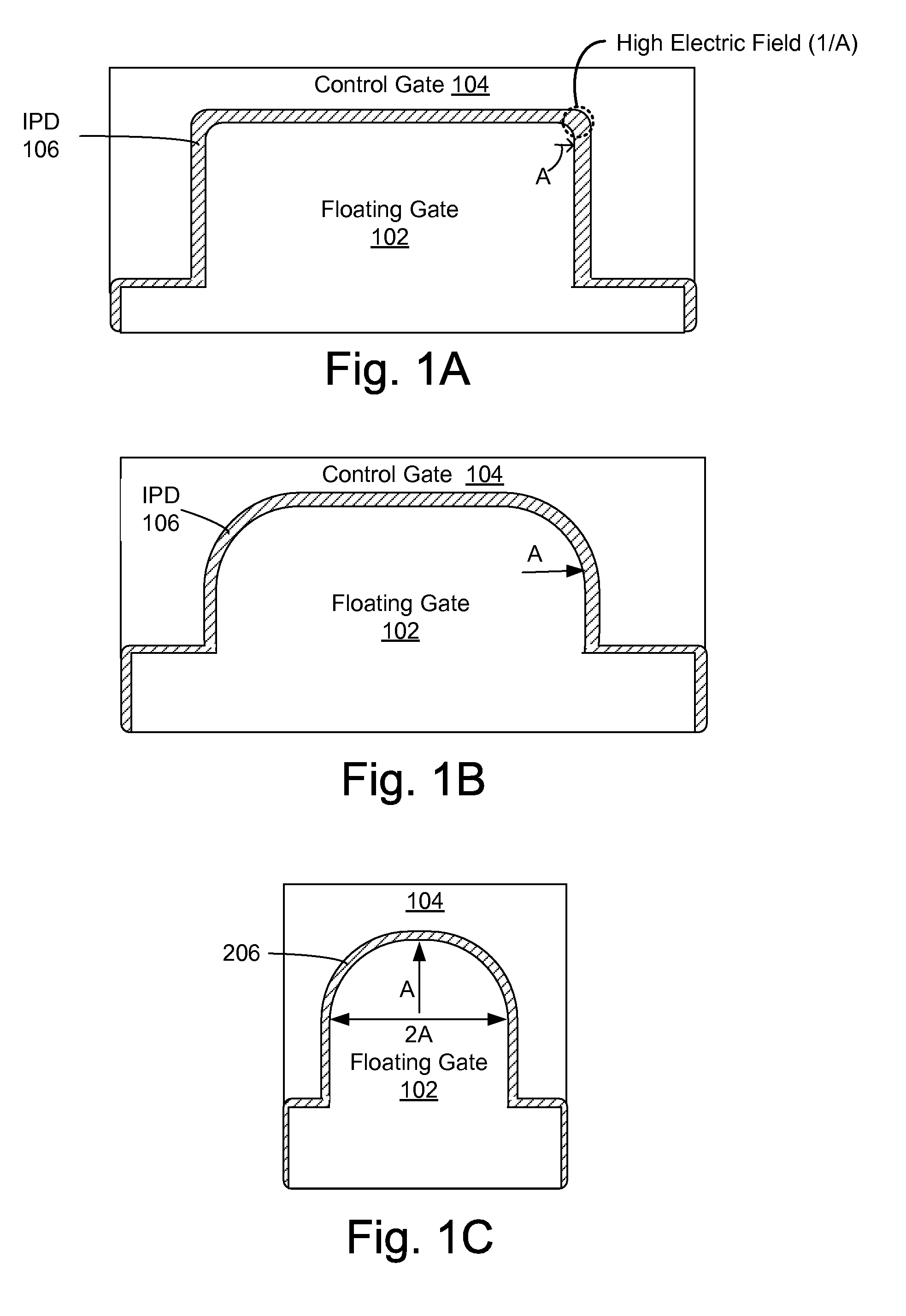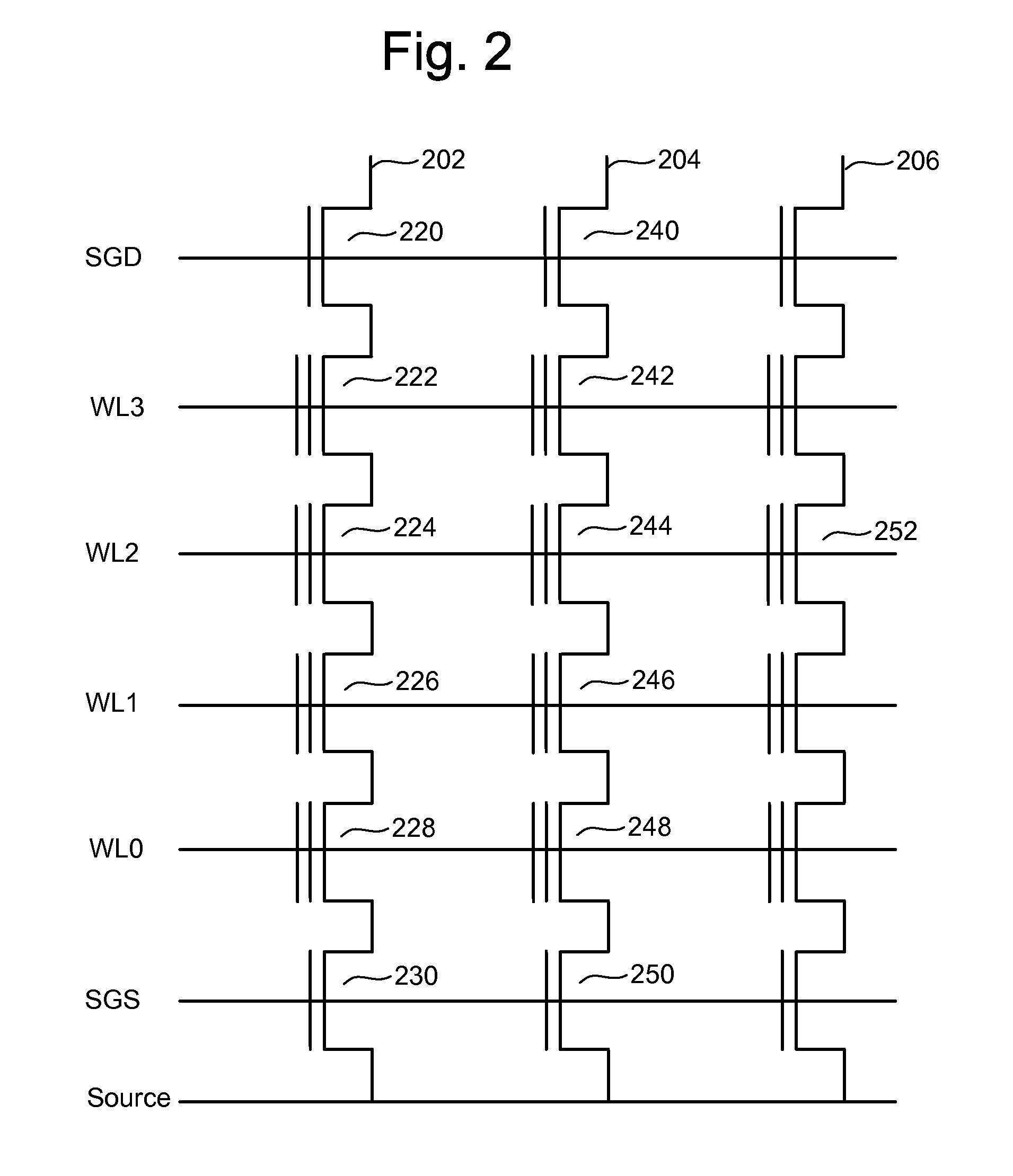Method for forming self-aligned dielectric cap above floating gate
a dielectric cap and floating gate technology, applied in the direction of semiconductor devices, basic electric elements, electrical appliances, etc., can solve the problems of increasing the difficulty of leakage current, and increasing the leakage current, so as to reduce the leakage current and reduce the strength of the electric field
- Summary
- Abstract
- Description
- Claims
- Application Information
AI Technical Summary
Benefits of technology
Problems solved by technology
Method used
Image
Examples
Embodiment Construction
[0035]One example of a flash memory system uses the NAND structure, which includes arranging multiple floating gate transistors in series between two select gates. The transistors in series and the select gates are referred to as a NAND string. A typical architecture for a flash memory system using a NAND structure will include several NAND strings. For example, FIG. 2 shows three NAND strings 202, 204 and 206 of a memory array having many more NAND strings. Each of the NAND strings of FIG. 2 includes two select transistors and four memory cells. For example, NAND string 202 includes select transistors 220 and 230, and memory cells 222, 224, 226 and 228. NAND string 204 includes select transistors 240 and 250, and memory cells 242, 244, 246 and 248. Each NAND string is connected to the source line by its select transistor (e.g. select transistor 230 and select transistor 250). A selection line SGS is used to control the source side select gates. The various NAND strings are connecte...
PUM
 Login to view more
Login to view more Abstract
Description
Claims
Application Information
 Login to view more
Login to view more - R&D Engineer
- R&D Manager
- IP Professional
- Industry Leading Data Capabilities
- Powerful AI technology
- Patent DNA Extraction
Browse by: Latest US Patents, China's latest patents, Technical Efficacy Thesaurus, Application Domain, Technology Topic.
© 2024 PatSnap. All rights reserved.Legal|Privacy policy|Modern Slavery Act Transparency Statement|Sitemap



